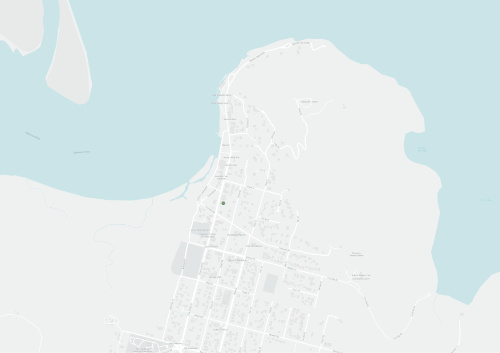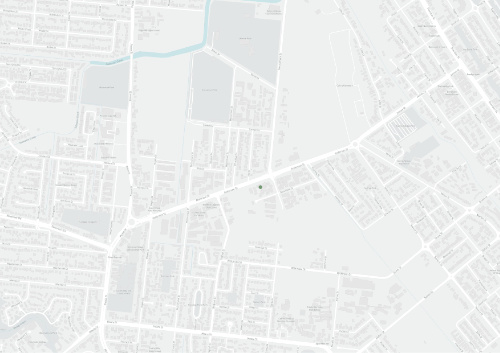Plan Explorer
Filter by:
Region
Topic
Sector
Other
Results
Port of Weipa environmental management plan
Current StrategicThis environmental management plan was released by the North Queensland Bulk Ports Corporation as part of their environmental program with the objective of acting as a reference document for all then-current and potential users of the Weipa port.
Napranum Community Plan
Current CommunityThe Napranum Shire Council released a community plan in 2012 looking at future development for (then) the next 10 years.
Brumby Hollow Property Pest Management Plan
Obsolete OperationalThis plan outlines the sustainable land management practices for Brumby Hollow over 4 years. Objectives are:
Bunata Property Pest Management Plan
Obsolete OperationalThis plan aims to protect the economy and environment of Bunata from the adverse impacts of weeds and feral animals.The objectives for weed and feral animal management in Bunata over the next 4 years are:
Butchers Hill Station Pest Management Plan
Obsolete OperationalTo manage the land of Butchers Hill Station, in a sustainable way, by controlling weeds and pest animals on the property, and ensuring it’s economic and environmental viability continues into the future.
Threats to priority species of the Cape York Peninsula region
Current Government PolicyOn day one of the regional workshop, participants used their knowledge of individual species to identify the major and minor regional threats that are affecting each species. On day two of the regional workshop, species were grouped by major threats.
Cape York Peninsula Feral Pig Management Plan 2006-2009
Obsolete OperationalThe Cape York Peninsula (CYP) Pest Management Strategy provides a planning framework for coordinated pest management between research bodies, agencies, communities, industries, individuals and the government.
Queensland Pest Animal Strategies - Feral Pigs (Sus scrofa)
Obsolete Government PolicyThe overall vision of the feral pig management strategy is to use best practice
management to minimise the impact of feral pigs on the environment, economy and
health of Queensland.
The strategy is intended to achieve five outcomes:
Cape York Peninsula Pest Management Strategy
Obsolete StrategicThe Cape York Peninsula Pest Management Strategy (CYPPMS) is a broad over-arching document that establishes a Cape-wide planning framework for integrated pest management by government, community, industry and individuals.
Jim's Joint Property Pest Management Plan
Obsolete OperationalThe plan has been prepared to protect the economy and environment of “Jim’s Joint” from the adverse impacts of weeds and feral animals.
Julery Pastoral Property Pest Management Plan
Obsolete OperationalThe plan represents a workable pest management program which identifies, combats and eradicates declared environmental pest plants and feral animals for Julery Pastoral.
Maitland Downs Property Pest Management Plan
Current OperationalThis plan provides a sustainable land management program for Maitland Downs, to control weeds and pest animals on the property, to ensure it’s economic and environmental viability continues into the future.
Cape York Peninsula Pest Management Plan 2006 - 2011
Obsolete StrategicThe Cape York Peninsula Pest Management Plan (CYPPMP) establishes a Cape-wide planning framework for integrated pest management by Government, Community, Industry and Individuals.
Eastern Kuku Yalanji Indigenous Protected Area Management Plan Stage 2
Current CommunityJalunji-Warra Land and Sea Country
(excerpt)
Cape York Peninsula Regional Biosecurity Strategy
Current StrategicCape York Natural Resource Management (Cape York NRM), Cook Shire Council (CSC), Weipa Town Authority, Wujal Wujal, Hopevale, Lockhart, Mapoon, Napranum, Aurukun, Pormpuraaw and Kowanyama Aboriginal Shire Councils and the Northern Peninsula Area Regional Council (NPARC) have collaboratively devel
Recently added
Recovery plan for the Northern Quoll Dasyurus hallucatus
Threatened speciesThis recovery plan was released in 2010 with the ultimate goal of haulting the decline of the Northern Quoll, which are threatened with extinction by cane toads as they have a susceptibility to the toxin.
National recovery plan for the Specatacled Flying Fox Pteropus conspicillatus
Threatened speciesThe Spectacled Flying Fox is consdiered a vulnerable species under the Commonwealth Environment Protection and Biodiversity Conservation Act 1999 and so this plan was developed by the Queensland and Australian Government's in order to secure long term protection of the flying fox populations by r
Recovery plan for the stream-dwelling rainforest frogs of the wet tropics biogeographic region of north-east Queensland 2000–2004
Threatened speciesThis plan was released in 2001 by the Natural Heritage Trust and Queensland Parks and Wildlife Service with the ultimate goal of improving the conservation status of particular species of stream dwelling rainforest frogs within the Wet Tropics.
Whale Shark recovery plan 2005-2010
Threatened speciesThe whale shark is the world's largest fish and one of only three filter feeding shark species, it was listed as vulnerable in 2001 under the Environment Protection and Biodiversity Conservation Act 1999 (EPBC).
National recovery plan for the bare-rumped sheethtail bat Saccolaimus saccolaimus nudicluniatus
Threatened speciesThis plan was released in 2007 with the goal of improving the conservation status of the then critically endangered bare-rumped sheethtail bat.
Recovery plan for threatened seabirds
Threatened speciesThis plan attempted to improve the conservation status of ten species of Sea Birds by protecting and effectively managing breeding and foraging habitats and ensuring that threats such as pest flora and fauna dont prevent population growth.
Plan for the recovery of the southern cassowary
Current Threatened speciesThe southern cassowary (Casuarius casuarius johnsonii) occurs primarily in rainforest habitats but can also be found in woodlands, swamps, and disturbed vegetation forraging for fruits throughout the Wet Tropics.
National recovery plan for the buff-breasted button-quail Turnix olivii
Threatened speciesThe buff-breasted button quail was listed as endangered under the Commonwealth Environment Protection and Biodiversity Conservation Act 1999 and vulnerable and Queensland Nature Conservation Act 1992 prompting the development of this national recovery plan.
National recovery plan for the water mouse (false water rat) Xeromys myoides
Threatened speciesThe water mouse is listed as vulnerable under the Commonwealth Environmental Protection and Biodiversity and Conservation Act 1999 prompting the development of this plan in 2010 in order to improve the conservation status of the species by habitat conservation, threat reduction, research and publ
National recovery plan for the wet tropics yellow-bellied glider Petaurus australis unnamed subspecies
Threatened speciesThe Wet Tropics yellow bellied glider is a small marsupial classified as vulnerable under the Commonwealth Environment Protection and Biodiversity Conservation Act 1999 and Queensland Nature Conservation Act 1992.

